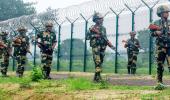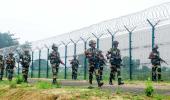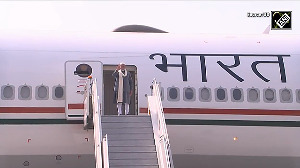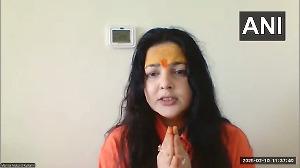Amateur Ham Radio operators have picked up suspicious late-night radio signals in coded Bengali, Urdu and Arabic along the Indo-Bangladesh border in South Bengal over the last two months, raising concerns about possible extremist activities, officials said.

The development comes amidst ongoing unrest in Bangladesh and growing anti-India rhetoric in the neighbouring country.
The incident first came to light in December last when Ham radio operators detected unauthorised communications in coded Bengali, Arabic, and Urdu from Basirhat and Bongaon in North 24 Parganas, as well as from the Sunderbans in South 24 Parganas.
Alarmed by these transmissions, the operators informed the Ministry of Communications. The matter was subsequently forwarded to the International Monitoring Station (Radio) in Kolkata for tracking.
Ham radio operators have also been asked to monitor and report if similar signals are detected again.
"These suspicious radio signals have been picked up between 1 am and 3 am. The transmissions are in coded Bengali (with a Bangladeshi accent), Urdu, and Arabic. Sometimes, there are signals in another language that we couldn't identify. Whenever we asked those communicating to identify themselves, they went silent," Ambarish Nag Biswas, secretary of the West Bengal Radio Club, told PTI.
According to Biswas, the first such signal was detected by a Ham radio operator in Sodepur in North 24 Parganas district in mid-December.
"Initially, we did not attach much importance to it. But then similar signals were detected from Basirhat, Bongaon, and later from South 24 Parganas district. Even during the Gangasagar Mela in mid-January, several Ham radio users reported hearing these suspicious signals," he said.
Asked why these signals seemed suspicious, Biswas explained that their pattern and language usage were unusual.
"The global norm among Ham radio users is that if a third party enters an ongoing communication; they must identify themselves using a radio identification code or radio call sign. But in these cases, whenever we asked for identification, the signals went silent. The pattern remained the same in all instances," he said.
Ham or amateur radio operators are licenced under the Union Ministry of Communications and are authorised to communicate using specific radio frequencies.
After Biswas reported the latest findings to his superiors in the Ministry of Communications in January, security agencies visited him to gather more details about the coded signals.
"I informed my superiors in New Delhi, who then forwarded the matter to the International Monitoring Station (Radio) Kolkata for investigation. We have also been asked to continue tracking these signals," he said.
A senior official from the Ministry of Communications confirmed that the matter had been forwarded to the International Monitoring Station (Radio) Kolkata for further examination.
A senior official from a security agency, who visited Biswas' place for details, declined to comment on the matter.
When contacted, a senior BSF official acknowledged the seriousness of the situation, stating that unidentified radio chatter along the border is a matter of concern.
"If we receive details from Ham radio users, we will use our resources to track the source of these transmissions," the BSF official said.
He added that it is not uncommon for smugglers and extremist groups to use Ham radio frequencies, as this mode of communication is unconventional and harder to track compared to mobile networks or emails, which are more easily monitored.
Biswas recalled previous instances where suspicious and unidentified radio transmissions were detected.
"In 2002-03, we had picked up similar communications. Police, after tracking the signals, arrested six extremists operating illegal radio stations from Gangasagar in South 24 Parganas district. At that time, these transmissions were in Pashto," he said.
A similar incident occurred in 2016 when Ham radio operators detected suspicious transmissions from the Indo-Bangladesh border areas.
Biswas also recalled that just before the communal clashes in Basirhat in 2017, Ham radio users had picked up suspicious signals from the border areas.
He said that Ham radio has historically played a crucial role in disaster management and security monitoring.
"Ham radio users are not only hobbyists but also serve as the eyes and ears in remote areas where traditional communication networks may not be accessible," Biswas said.
India and Bangladesh share a 4,096-km border of which 2,217 km is with West Bengal, much of which is porous. The issue has gained prominence amid heightened tensions following the ouster of Sheikh Hasina from power in Dhaka in August last year.
Relations between the two neighbours have been strained since Hasina fled to India on August 5.
The arrest of Hindu monk Chinmoy Krishna Das has further intensified the situation, with India expressing concerns over continued attacks on minorities, particularly Hindus, in Bangladesh.











 © 2025
© 2025